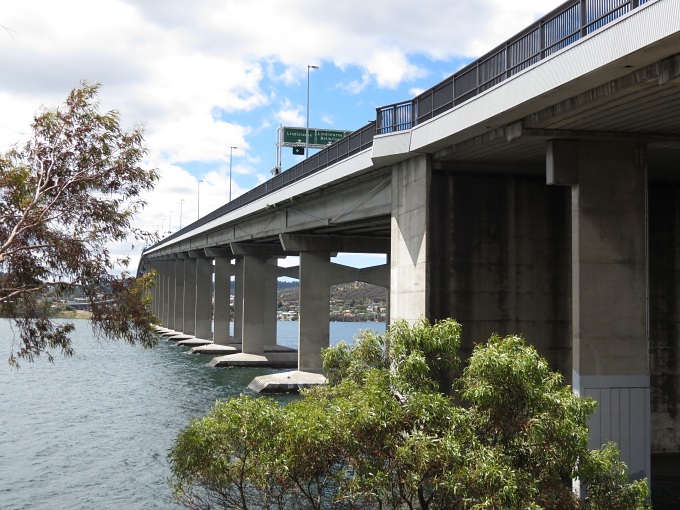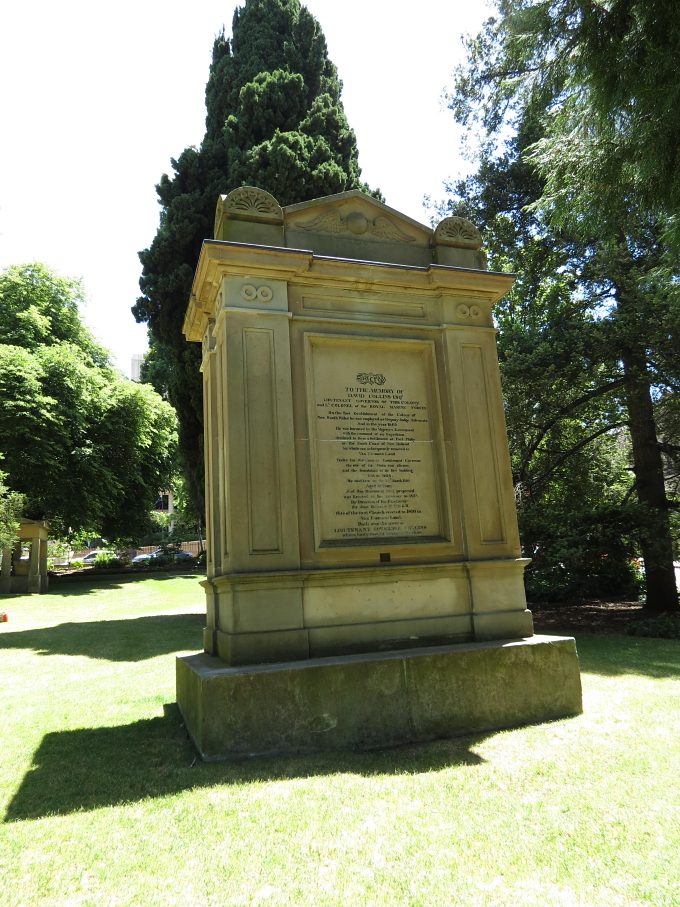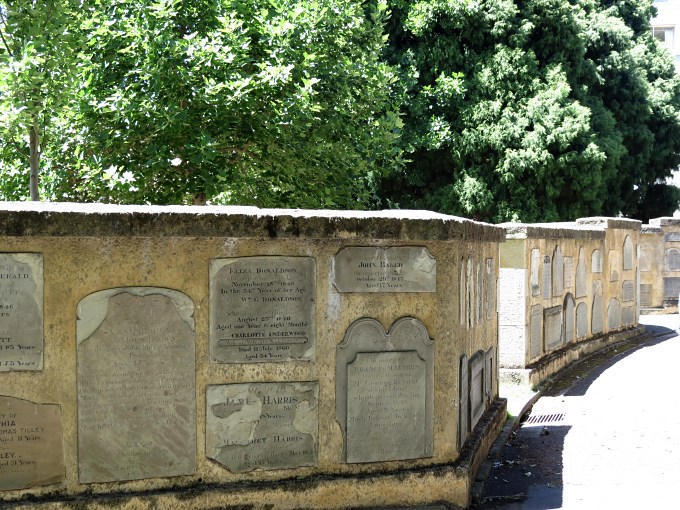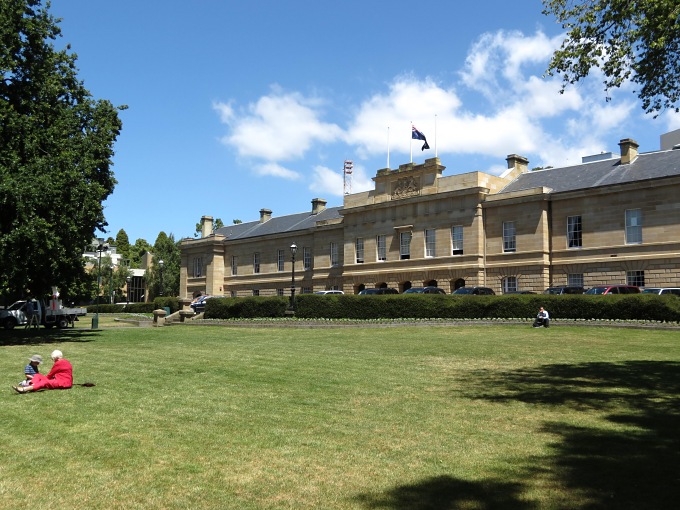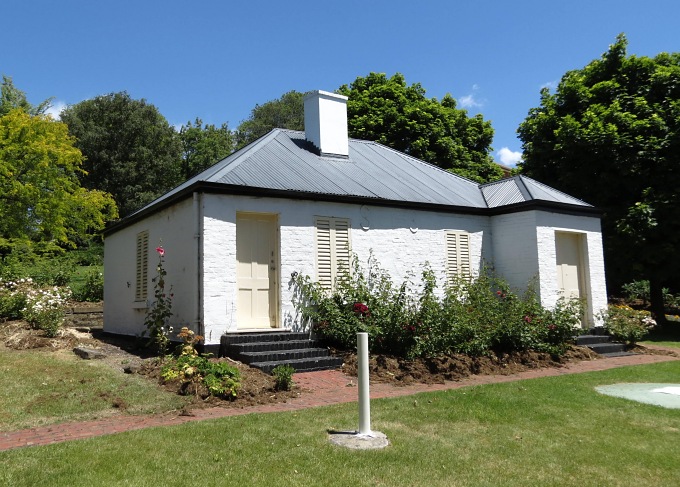A Walk in the Park
/ There's been short hiatus in the city between the Christmas holiday and the arrival of the Sydney-Hobart race boats. The big maxis (100'+ boats) arrive in two days, but the rest of the fleet takes a few more days and the festivities await their arrival. The whole city seems poised to burst. Being in Cornelian Bay, we decided on a summer's day walk before the hubbub begins again. We found “urban walks' listed by the Hobart City Council which offered more self-guided walking tours through the city's parks.
There's been short hiatus in the city between the Christmas holiday and the arrival of the Sydney-Hobart race boats. The big maxis (100'+ boats) arrive in two days, but the rest of the fleet takes a few more days and the festivities await their arrival. The whole city seems poised to burst. Being in Cornelian Bay, we decided on a summer's day walk before the hubbub begins again. We found “urban walks' listed by the Hobart City Council which offered more self-guided walking tours through the city's parks.
We left the dinghy on the sandy beach at Cornelian Bay and headed along the foreshore walk into town.
We could peek out at Cups every now and then as we followed the treed path. The walk took us past the entrance to the Botanical Gardens and underneath the Tasman Bridge, which rumbled loudly above us. We had already visited Queen's Domain and the Gardens so we continued on into town.
Once in the city, we covered some previously walked tracks, but with a new mission. We headed into Franklin Square. Named after Lieutenant Governor Sir John Franklin, a distinguished explorer and governor of Van Diemen's land in the 1840's, this shady park is criss-crossed with neat brick pathways, lined with oak trees. Franklin wasn't particularly well-liked, we read, primarily because he introduced a new probationary program for convicts which essentially ended free labor in the colony and ruffled many feathers. They still erected a statue to him in the middle of the park as well as a fountain. The park is also the transit hub for most local buses.
It was a quick walk to St. David's Park. We enjoyed this park for the Carols by Candlelight a few nights ago. It looked totally different in the daylight. We hadn't really noticed the wonderful lions that grace the Park's main entrance.
We also hadn't realized that this park was Hobart's first cemetery in 1804. Nine hundred were once buried here though many of the remains have now been relocated. David Collins, first Lieutenant Governor for whom the park is named, is still interred here in a casket of Huon pine, a large memorial marking the spot.
By the 1830's, the cemetery was unattended and neglected. The gravestones crumbled and toppled. The bush took over and unsavory characters used the grounds for hideouts and nefarious deeds. It was reclaimed by the city in 1919 and restored. Some headstones still remain. Memorial walls have been erected and parts of headstones, inscriptions still faintly visible, have been mounted on the walls.
Parliament Park borders Salamanca Place. With the state Parliament building in the background, the park is all lawn, nice for sitting and reading under a tree.
Not far away is Prince's Park. Originally part of the strategic Mulgrave Battery in 1818, in 1855, it was renamed Prince of Wales Battery and expanded to include the Prince Albert Battery higher on the hill. A tunnel system is still available for tour visits. An old semaphore station which once signalled ships entering Hobart Harbor and relayed messages to Port Arthur, still stands on the edge of the park. Historic signs mingle with children's playground equipment. The sun dial was very accurate.
We headed back along the foreshore again. We had passed Mawson Place a hundred times while were tied up at Elizabeth Street Pier, but never really paid it its due. Named after Sir Douglas Mawson, noted Australian geologist and Antarctic explorer, this small waterfront pavilion offers contemporary sculpture with a background of the Constitution Dock and funky floating fish'n'chip shops that require you to scoot down on your knees to place orders when it's low tide. A polycarbonate skating rink had just been erected, but the rentable figure skates had not arrived yet, so the seagulls had the place to themselves.
We retraced our steps back to Cornelian Bay and Cups. Tomorrow hopefully more S-H race boats will have arrived and the Tasmania Taste Fest will be in full swing.


